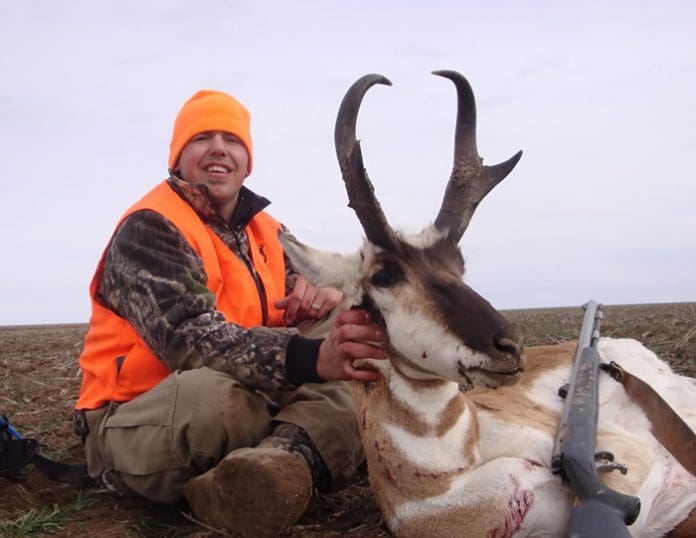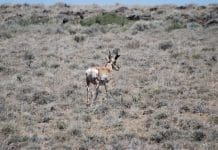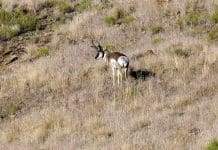Late season Antelope Tips
Guest Contributor – Kevin Clerkin
Late season antelope hunting is darn tough! By mid-to late October, the reckless curiosity and aggression exhibited during the rut is gone. Wary antelope bucks have long since learned that a man on the skyline or a pickup in the distance could be trouble. However, for the patient and determined hunter, the reward can be large herds with mature bucks and does congregated on the winter range.

Here are some tactics that work for me on late season pronghorn bucks!
- Try the muzzleloader season: In Colorado, muzzleloader pronghorn season is in late October. It can be a challenge to get into muzzle loader range of the wary winter herds, but tags are considerably easier to draw. Often times getting an antelope tag is the hardest part of the hunt.
- Put your long optics to work: Depending on the weather, bucks may be right alongside the does in large winter herds. Glass from a distance to find the buck you want to hunt and develop a plan.
- Plan a stalking route that uses the lay of the land: In the relatively flat plains and sage country of the West, getting close to late season bucks can be a chore. Use any cover or terrain feature available to conceal your approach. I like to use cover such as ditches, fence-lines, creek bottoms, cattle-pond dams, and hay-bales to sneak within range.
- Be prepared to belly crawl: Sometimes the only way to close the distance for a shot is to break out the knee pads and army crawl. It’s often a miserable proposition in the mud and cold, but the reward is sweet.
- Find natural crossing points: These points can be extremely obvious and should be identified while scouting. Fifty to 100 antelope leave a lot of tracks. Find the right spot with some nearby cover, stay low, and let them come to you.
- Locate animals at last light: Antelope don’t usually move far at night. This may allow you to sneak within range under the cover of darkness the next morning and wait for dawn to reveal your quarry. In really open terrain, this may be your only hope to get within range.
- Know the animal’s habits: In the area I hunt, antelope shy away from winter wheat after heavy rain or melting snow. They seem to prefer the firmer pasture land in these conditions. Every herd will have their own quirks – learn them and you can stay one step ahead of the game.
- Knock on some doors: Large antelope herds can do some major damage to crops, especially winter wheat. We have been very successful at getting permission from farmers and ranchers to hunt late season antelope. It never hurts to ask!




















